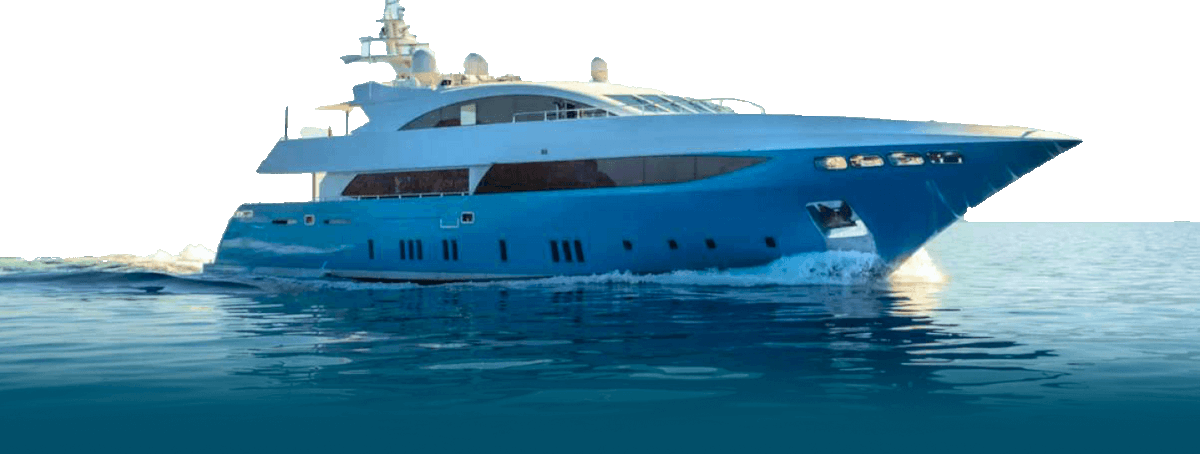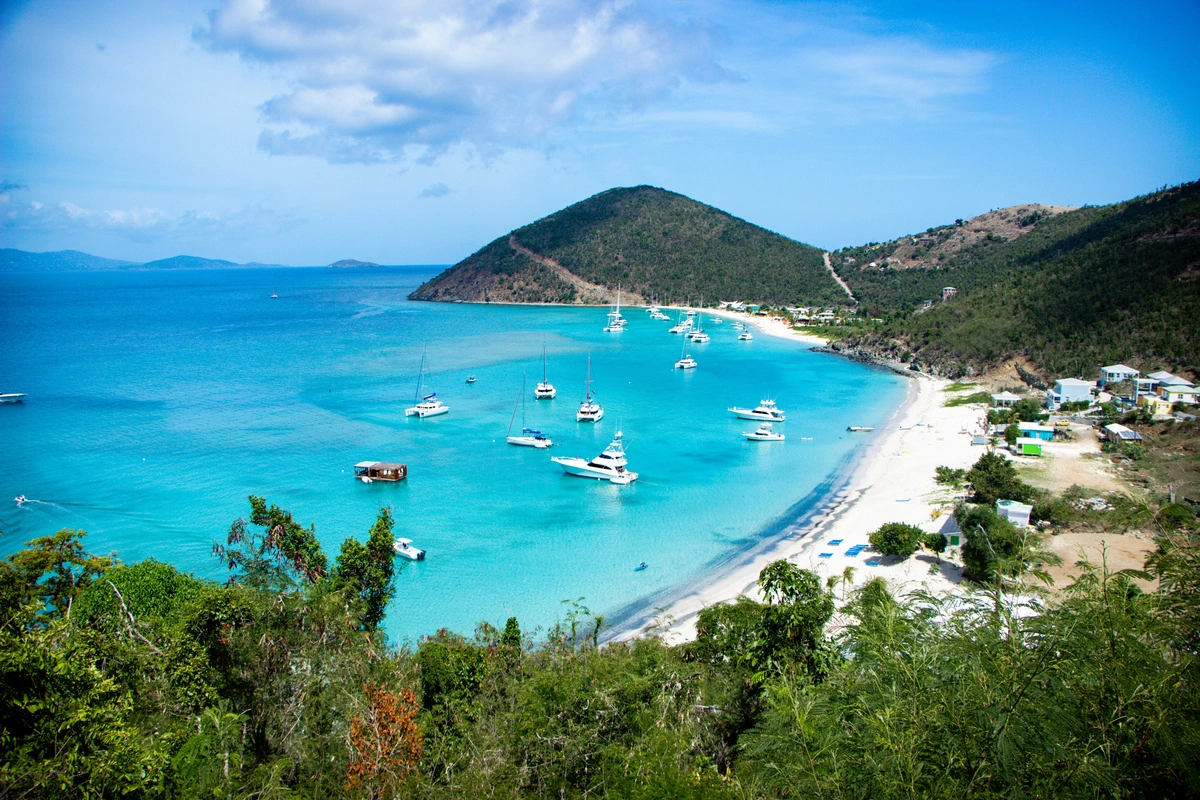
BVI Sailing Itinerary: Ultimate Island-Hopping Adventure
Welcome to the British Virgin Islands (BVI), a sailor’s paradise with crystal-clear waters, sunny skies, and lush landscapes. If you want an island-hopping adventure, creating a great BVI Sailing Itinerary is the best way. This guide is for everyone, from experienced sailors to beginners. It offers a journey with beautiful views, lively sea creatures, and memorable experiences.
The BVI: A Sailor’s Paradise
The British Virgin Islands, a stunning archipelago located in the Caribbean Sea, comprises over 60 islands and cays. Each island boasts unique charm and appeal, making it a diverse playground for sailors. The BVI has many experiences for all kinds of sailors, from the busy Tortola to the calm Anegada.
The BVI is renowned for its perfect sailing conditions. The area has steady winds, safe bays, and many places to anchor, making it good for short sails and long journeys. The clear blue waters are great for snorkeling and diving, and the islands have beautiful beaches and quiet coves. A sailing trip in the British Virgin Islands lets you explore at your speed, find hidden treasures, and enjoy a relaxed island lifestyle.
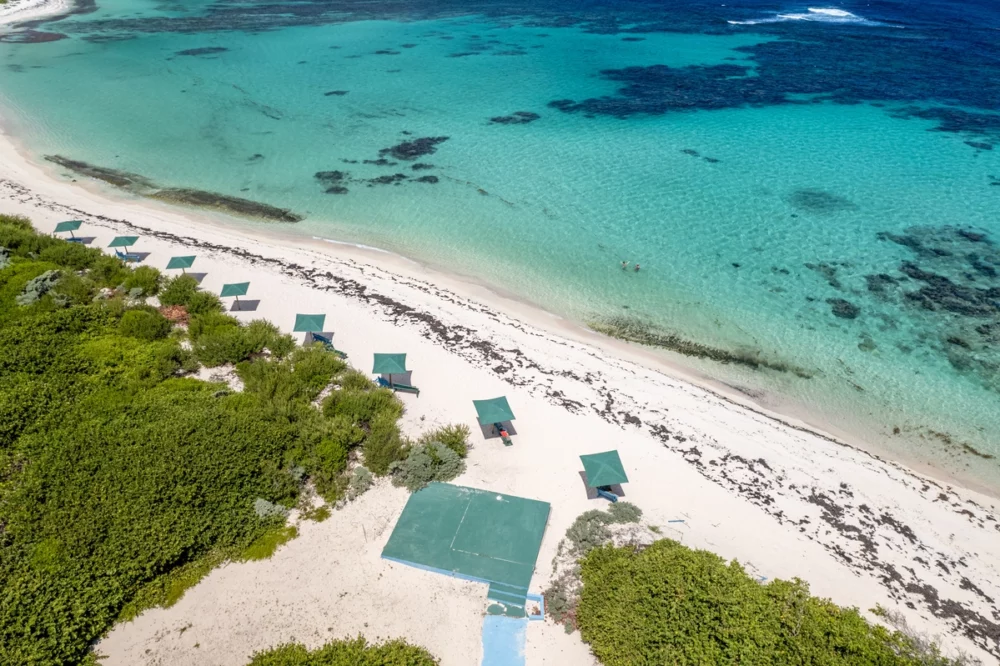
What to Expect on A BVI Sailing Charter
Booking a private yacht charter is a way to experience the natural beauty of the British Virgin Islands. This will allow you to explore the islands in all their glory. You can snorkel in secluded bays or sail past the numerous sugar-white beaches. Remember to visit Norman Island and swim with the renowned jellyfish—their sting is harmless, yet they look spectacular!
Or visit one of the numerous uninhabited cays, such as Sandy Cay, to enjoy solitude and seclusion. There’s even a ghost town there called Rebecca Bay which was abandoned after Hurricane Irma hit back in 2017. The Sir Francis Drake Channel is the body of water that separates Tortola from Jost Van Dyke. Sir Francis Drake is believed to have landed on Jost Van Dyke for the last time during his voyages in 1595.
You’re bound to have a great time in the BVI, even if you have only one week to spend on your luxury vacation. If you have more time, we suggest spending ten days to two weeks enjoying this amazing yachting destination. We are happy to help arrange land excursions and transfers from your location. Please see below to learn about one of our favorite sailing itineraries in the British Virgin Islands.
Pre-Sail Prep: What You Need to Know Before Setting Sail
Before setting off on your British Virgin Islands sailing itinerary. Here’s a checklist to ensure you have everything you need:
- Travel Documentation: Ensure you have your passport and other necessary documentation. Depending on your nationality, you might need to complete customs and immigration forms upon arrival.
- Packing Essentials: Pack light, breathable clothing suitable for the tropical climate. Don’t forget sunblock, a wide-brimmed hat, sunglasses, and comfortable sandals. Bring your snorkeling gear, though many places offer rentals but some yachts already have it.
- Choosing Your Yacht: For the ultimate sailing experience, a crewed motor yacht charter is the best choice. A crewed yacht offers luxury and convenience for your adventure. A skilled crew will take care of navigation and tasks. This lets you relax and enjoy your journey.
- Safety Gear: Ensure your yacht has life jackets, a first-aid kit, fire extinguishers, and emergency flares. Familiarize yourself with the yacht’s safety procedures and equipment.
- Provisioning: Your crewed yacht will be provisioned based on your food and drinks preferences.
BVI Sailing Itinerary Samples and Options:
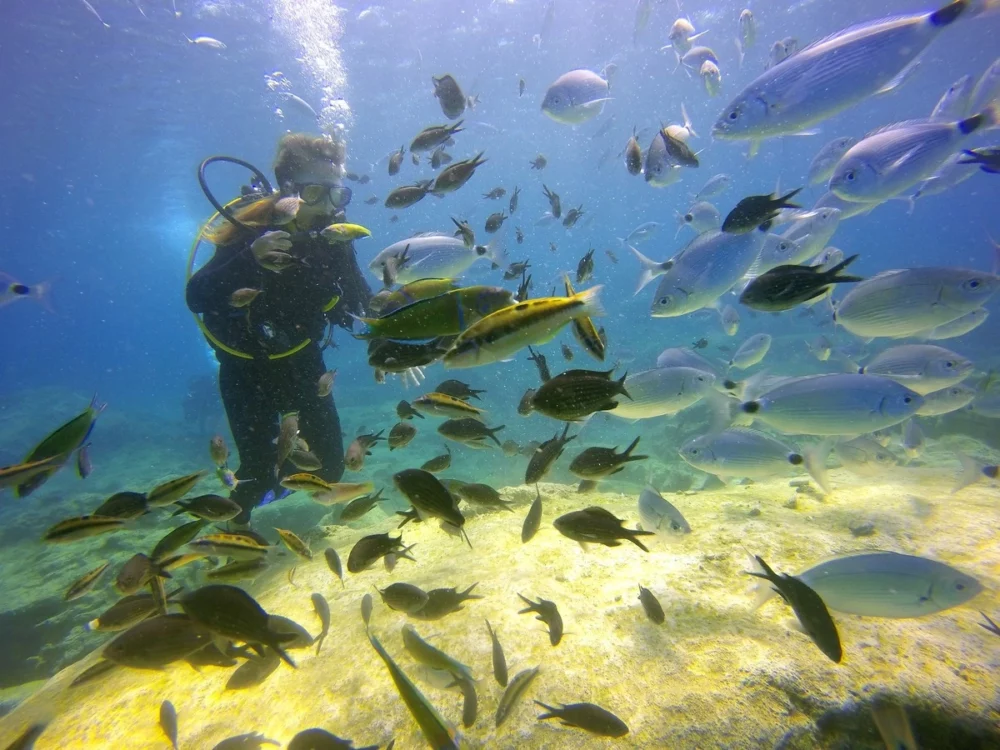
BVI Sailing and Diving Itinerary
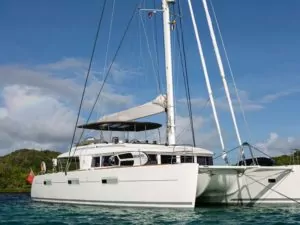
BVI Sailing Itinerary on SAIL AWAY
Day 1 – Tortola to Norman Island
Your British Virgin Islands Yacht Charter begins on Tortola, the largest and most populous island. Tortola is home to Road Town, the main harbor, and a bustling hub for yacht charters.
Morning: Start your journey by setting sail from Road Town. Head towards Norman Island, famous for its stunning snorkeling spots. As you sail through the Sir Francis Drake Channel, you’ll enjoy spectacular views of the surrounding islands and crystal-clear waters.
Afternoon: You will arrive at Norman Island. It is called “Treasure Island” because of its link to Robert Louis Stevenson’s book. Explore The Caves and The Indians, where you’ll find vibrant coral reefs teeming with colorful fish.
These snorkeling spots are known for their beautiful underwater views. They should be part of any sailing plan in the British Virgin Islands.
Evening: Anchor at The Bight, a beautiful bay on Norman Island. Enjoy dinner at the famous floating bar and restaurant, Willy T’s. This iconic spot offers a lively atmosphere and has delicious food, drinks, and a chance to meet fellow sailors. Don’t miss to jump off the boat and enjoy a refreshing swim in the warm Caribbean waters.
Day 2 – Exploring Peter Island and Cooper Island
Morning: On the second day of your BVI sailing Itinerary. Set sail for Peter Island, known for its luxurious resorts and tranquil coves. Spend the morning at Deadman’s Bay, a stunning beach perfect for sunbathing and swimming. The beach is named after a legend involving pirates, adding an extra layer of intrigue to your visit.
Afternoon: Have lunch at a beachfront restaurant on the island, enjoying the beautiful views around you. After lunch, sail towards Cooper Island, a charming island known for its relaxed atmosphere and excellent snorkeling opportunities. Pick up a mooring and unwind at the Rum Bar, where you can sample local brews and enjoy the laid-back vibe.
Evening: Cooper Island also offers a boutique brewery, perfect for those who appreciate craft beers. As the sun sets, relax on the beach or stroll around the island, soaking in the serene surroundings.
Day 3 – Virgin Gorda and The Baths
Morning: On Day 3, sail to Virgin Gorda, one of the most popular destinations in the BVI. Visit The Baths, a special place with large granite rocks forming tidal pools, tunnels, and caves for exploration. This natural wonder offers fantastic opportunities for exploration and snorkeling. Morning snorkeling here is particularly rewarding as the water is calm and visibility is excellent.
Afternoon: After exploring The Baths, sail to the Bitter End Yacht Club, On the northern tip of Virgin Gorda. This resort offers a variety of activities and is a great spot to relax after a day of adventure. Enjoy a tropical drink while watching the sunset over the Caribbean Sea.
Evening: The Bitter End Yacht Club often hosts live music and other entertainment, providing a perfect end to your day. Take advantage of the lively atmosphere and enjoy the music and food offerings.
Day 4 – Anegada: Coral Island Experience
Morning: Set sail for Anegada, the only coral island in the BVI. Known for its flat landscape and pristine beaches, Anegada offers a unique experience compared to the other islands. Explore the island’s salt ponds and spot flamingos in their natural habitat.
Afternoon: Relax on the island’s beaches or rent a bike to discover its quieter spots. Anegada is renowned for its seafood, try the famous lobster dinner on the beach during the fourth day of your BVI sailing itinerary. The local restaurants serve freshly caught lobster that’s grilled to perfection.
Evening: Enjoy a peaceful evening atmosphere and stunning sunsets in Anegada. This is a great opportunity to unwind and reflect on your journey.
Day 5 – Jost Van Dyke: Party Island with a Laid-Back Vibe
Morning: Sail to Jost Van Dyke, known for its vibrant social scene and laid-back vibe. Arrive early at White Bay, famous for its beach bars and lively atmosphere. Pick up a mooring and get ready to experience the island’s renowned party scene.
Afternoon: Start your day at the Soggy Dollar Bar, where you can enjoy a Painkiller cocktail and live music. The bar’s relaxed setting and friendly staff make it a popular spot for visitors. Continue the fun at Foxy’s, another iconic bar on the island, or head to Great Harbour for a taste of local nightlife.
Evening: Jost Van Dyke is known for its beach parties and vibrant nightlife. Enjoy a night of dancing and socializing with fellow travelers at one of the island’s many bars and clubs.
Day 6 – Relaxing in Cane Garden Bay and Sandy Cay
Morning: On the final day of your sailing Itinerary, sail to Cane Garden Bay, a popular spot for beachcombing and water sports. Enjoy your morning basking in the sun and sand, or engage in activities such as kayaking or paddleboarding. The bay is renowned for its crystal-clear waters and picturesque surroundings.
Afternoon: Sail to Sandy Cay, a small empty island that feels like your private paradise. Enjoy a picnic on the beach and the stunning views of the surrounding turquoise waters. Sandy Cay offers a peaceful retreat, perfect for unwinding before the end of your journey.
Evening: Return to Tortola and reflect on the incredible experiences. Have a final dinner at a local restaurant or relax on your yacht. Take some time to remember the great moments from your sailing trip to the British Virgin Islands.
Day 7: Exploring Lesser-Known BVI Spots
Adventurous travelers can discover more than just the usual sailing routes in the British Virgin Islands. Discover calm anchorages and secluded bays like Pelican Island and Prickly Pear Island. These spots offer a peaceful escape from crowded places.
Visit Salt Island for its historic salt ponds or Marina Cay for a charming local atmosphere. If you enjoy history, visit places connected to Robert Louis Stevenson. You can also find other hidden spots that offer unique experiences.
CKIM Group: Your Partner in Creating the Perfect BVI Sailing Itinerary
When planning a sailing itinerary for the British Virgin Islands, CKIM Group is the top choice for yacht charters. CKIM Group has years of experience in the BVI and customizes each travel plan to meet your needs and preferences. They offer personalized service and help you choose the right yacht, for your trip.
They also plan a route that includes all the places you want to visit. Many satisfied clients have trusted CKIM Group to make their BVI dreams come true, and their expertise ensures that
Embrace the Magic of a BVI Sailing Adventure
As your British Virgin Islands sailing itinerary ends, reflect on the incredible experiences. From stunning beaches to vibrant marine life, the BVI offers a unique sailing adventure. Whether it’s the thrill of the open sea or discovering a secluded cove like Treasure Island, the BVI is a sailor’s dream. So, what are you waiting for? Set sail and embrace the BVI!
Frequently Asked Questions
-
Consider factors such as the number of guests, desired amenities, and your planned activities. Consulting with a yacht charter broker like CKIM Group can help you select the perfect yacht.
-
Activities include snorkeling, scuba diving, exploring historical sites, dining at beach bars, and relaxing on the white sand beaches. The BVI offers something for every type of traveler.
-
Top destinations include Tortola, Virgin Gorda, Norman Island, Jost Van Dyke, and Anegada, each offering unique experiences from vibrant nightlife to serene beaches.
-
Pack light, breathable clothing, swimwear, sun protection, and any personal items you need. It’s also advisable to bring a camera to capture the stunning scenery.
-
CKIM Group offers extensive knowledge of the BVI, personalized service, and access to a wide range of luxury yachts, making them a top choice for planning an unforgettable yacht charter experience.
-
Costs vary depending on the type of yacht, the duration of the charter, and additional services requested. Typical expenses include the yacht rental, crew, fuel, and dockage fees.
-
The best time to charter a luxury yacht in the BVI is during the peak season from December to April when the weather is ideal and the steady trade winds provide excellent sailing conditions.
-
You can choose from motor yachts, sailing yachts, and catamarans, each offering distinct features and amenities to suit your preferences for a luxury yacht hire in the BVI.
